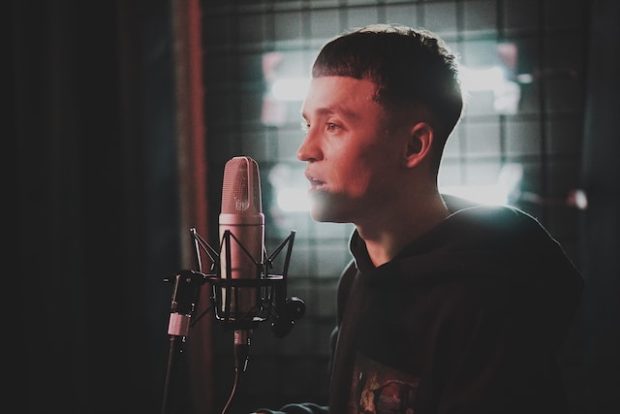In the vast world of media and advertising, countless voices penetrate our ears every day. From radio and television commercials to online advertisements, these auditory experiences are made possible by talented commercial voice-over artists. But have you ever wondered what it takes to become a successful voice-over artist? In this guest post, we will go beyond the booth to explore the life and challenges faced by these unsung heroes of the advertising industry.
1. Discovering the Talent
Beneath the polished commercials that grace our screens and radios lie hours of hard work and dedication. For many artists who do voiceovers for commercials, their journey starts with discovering their unique vocal talent – whether through acting classes or a natural aptitude for imitating voices.
However, having a good voice isn’t enough. It is crucial to develop essential skills such as enunciation, pacing, and emphasis. These skills allow artists to communicate emotions effectively and convey information in an engaging way.
2. The Importance of Versatility
Versatility is another key attribute that distinguishes successful commercial voice-over artists from the rest. From energetic and upbeat voices for product promotions to authoritative tones for corporate videos, they need to adapt their delivery style based on the requirements of each project.
Furthermore, versatile commercial voice actors also possess different accents or language abilities that cater to multicultural markets globally. This versatility allows them to capture diverse target audiences accurately.
3. The Challenges Behind the Scenes
Like any profession, being a commercial voice actor comes with its unique set of challenges. One significant obstacle they face is fierce competition within the industry. With so many aspiring talents vying for a limited number of opportunities daily, carving out a steady career requires persistence and determination.
Moreover, maintaining vocal health is a crucial but often overlooked aspect among commercial voice-over artists. Constant strain on vocal cords due to long recording sessions can lead to fatigue and even vocal injuries if not properly managed. Voice actors must prioritize rest, hydration, and vocal exercises to keep their instruments in prime condition.
4. Diverse Projects: The Rewards and Required Adaptability
Commercial voice-over artists relish the excitement of working on a variety of projects. From narrating e-learning modules to delivering catchy jingles, commercial voice actors enjoy the diversity that each assignment brings.
By embodying different characters or roles, they become the guiding voice behind animated movies or video games. They have the power to breathe life into countless stories and ad campaigns alike. These adaptation skills require not only talent but also extensive research and preparation for every project.
5. Building Relationships with Clients
Establishing strong relationships with clients is integral for commercial voice-over artists to thrive in their careers. Producing quality work is just one aspect; understanding client expectations, taking feedback positively, and delivering promptly are equally important elements from a professional standpoint.
Moreover, as brands look for consistent voices in subsequent commercials and campaigns, maintaining strong relationships with clients often encourages long-term associations – opening doors to more opportunities down the line.
6. The Evolution of the Commercial Voice Over Industry
The commercial voice-over industry has undergone significant transformations over the years, adapting to technological advancements and changing consumer preferences. In earlier days, voice-overs were primarily used in radio advertisements, where scripts had to rely solely on verbal communication to engage listeners. As television and online platforms gained popularity, visual storytelling became more prominent. This shift required commercial voice-over artists to adopt new techniques, such as syncing their delivery with visuals or providing voice-overs for animated characters in commercials.
Furthermore, the rise of social media has revolutionized advertising strategies, with brands now seeking shorter and more impactful content that quickly captures viewers’ attention. This change necessitates commercial voice actors to deliver compelling performances within limited time frames.
7. Breaking Down Gender Stereotypes in Commercial Voice-Overs
Traditionally, certain gender stereotypes were associated with specific types of commercials. For example, women’s voices were often deemed suitable for beauty products or household items, while male voices dominated car or technology ads. However, in recent years, there has been a positive push towards breaking down these stereotypes.
Brands are increasingly recognizing the importance of diversity and inclusivity when selecting commercial voice-over talent. Female voices are being used for sports-related advertisements, while male voices lend themselves effectively to promotions targeted toward families or fashion brands. By challenging traditional gender roles through casting choices, companies create advertisements that reflect society’s evolving values and appeal to a wider range of consumers.
Conclusion: The Unsung Heroes
While commercial voice-over artists may not always take center stage like actors or singers, they play an indispensable role in contemporary advertising and media landscapes. Their talent breathes life into scripts that resonate with audiences across various platforms.
Behind the enchanting voices we hear every day lie hard-working professionals who possess an unwavering passion for their craft. By surmounting challenges and striving for versatility, these unsung heroes continue to shape our audiovisual experiences – creating magic both on-screen and beyond the booth.
Read More:


